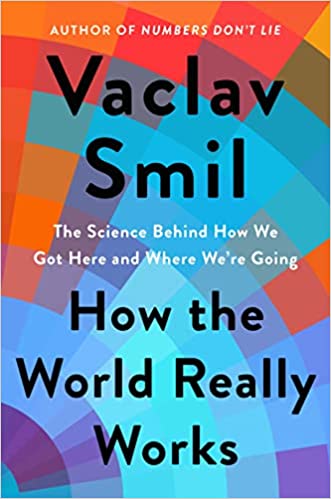You have /5 articles left.
Sign up for a free account or log in.
 How the World Really Works: The Science Behind How We Got Here and Where We’re Going by Vaclav Smil
How the World Really Works: The Science Behind How We Got Here and Where We’re Going by Vaclav Smil
Published in May 2022
The best book I’ve read this year about the future is Vaclav Smil’s How the World Really Works.
The irony is that Smil is an avowed antifuturist, repeatedly noting that he refuses to make predictions about the state of the world in 2030, 2050 or beyond.
What Smil does brilliantly in How the World Really Works is use data to debunk the claims of both catastrophists and techno-optimists.
Despite what you might want to believe, the world is neither headed for a climate-change apocalypse nor a singularity-driven techno-utopia. Electric cars will replace gas-driven vehicles more slowly than we would desire, and we will have decades to come in which our energy needs are dependent on fossilized-carbon fuels.
How the World Really Works is a terrific guide to understanding modern life’s energy and material underpinnings. The world is built on a foundation of ammonia (fertilizer), plastic, cement and steel. Each of these materials is essential for the continuation and advance of civilization, and each requires enormous amounts of energy to produce.
What How the World Really Works will not tell you about is how higher ed really works. How does reading Smil influence how we think about our universities?
First, Smil might observe that everything we do in academia depends on energy. We seldom give much thought to the energy required to produce the tools we use for teaching, research and service. Everything from our buildings to our laptops is a product of energy transformations.
Nor do we tend to consider the degree to which campus academic life is dependent on the presence of reliable electricity. Perhaps the power outages at Stanford this month will raise the profile of electricity across academia.
Second, Smil would be highly skeptical of efforts to forecast the future of higher education. I’m obsessed with what the university might look like in the 2050s. Thirty-one years ago, I graduated from college. Thinking about the college of 2053 does not feel like all that much of a stretch.
Yet Smil would point out that the fan of possible university futures expands the more years we look forward. He would say that universities are built on energy. And that energy transitions occur slowly.
Smil would argue that we should stop looking at the iPhone as an indication of progress and that large-scale material changes are nothing like the shift from dumb to smartphones.
Finally, Smil might say that heart of the campus-based university can be found not in our classrooms, labs or administrative buildings—but in our power plants. He would point out that many universities produce at least part of their heat and electricity, yet the co-generation plant is never on the campus tour.
An acolyte of Smil might argue that the aggressive installation of solar panels on the roofs of academic buildings and residence halls is not only a strategy to support clean energy but a visible and tangible statement of the institution’s values.
What are you reading?




